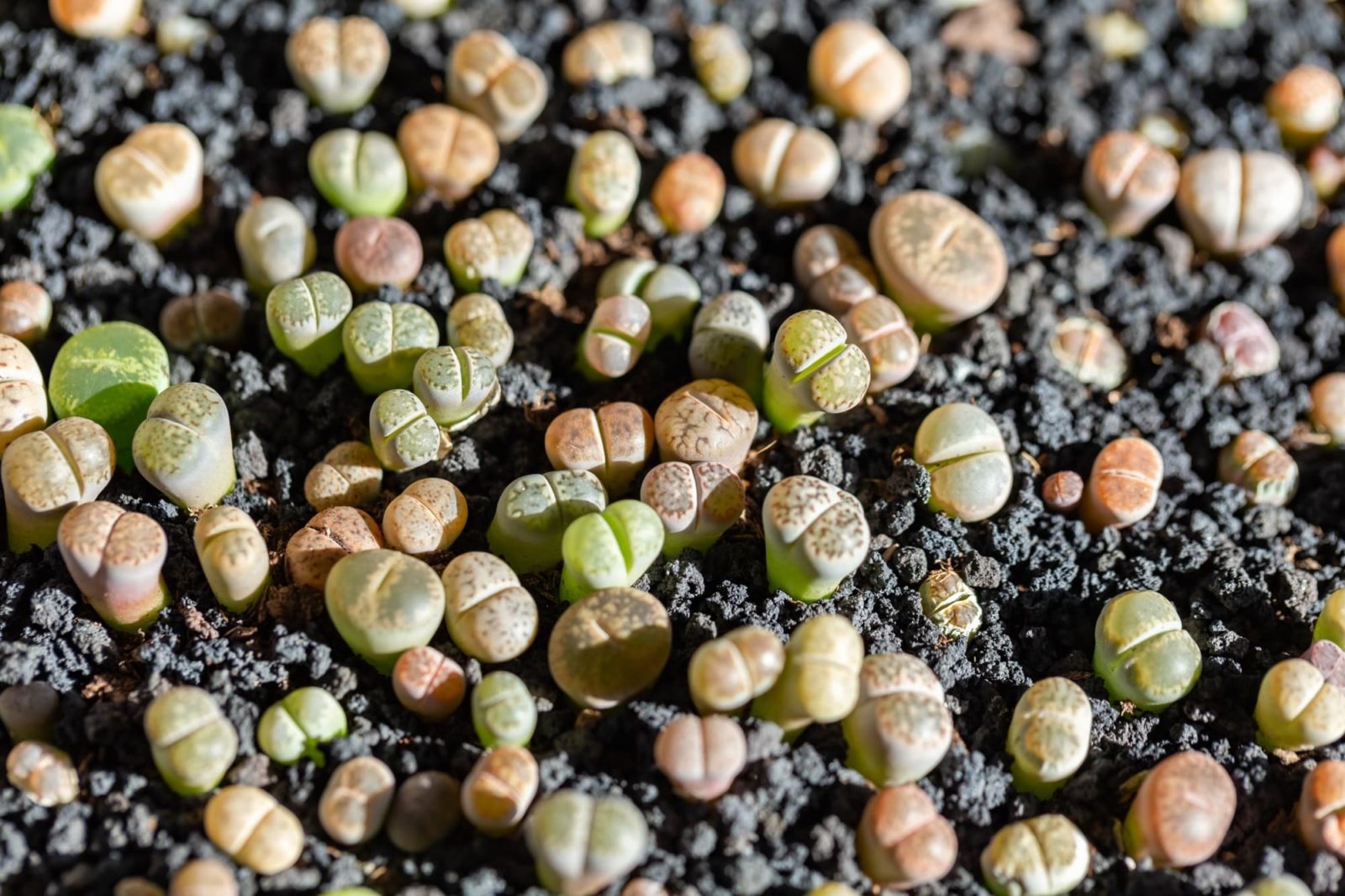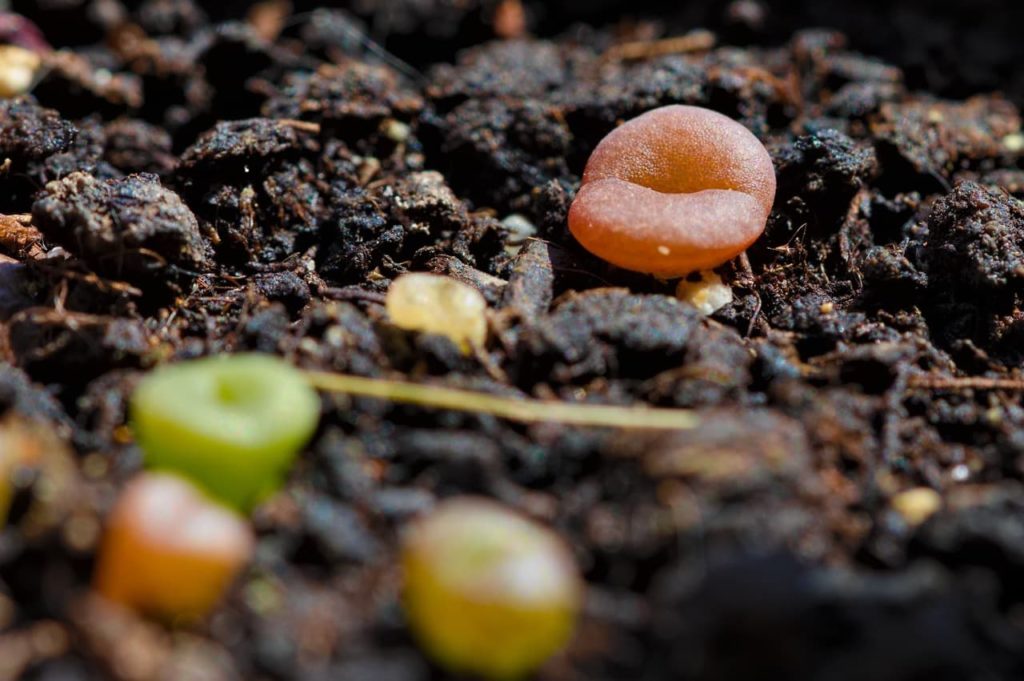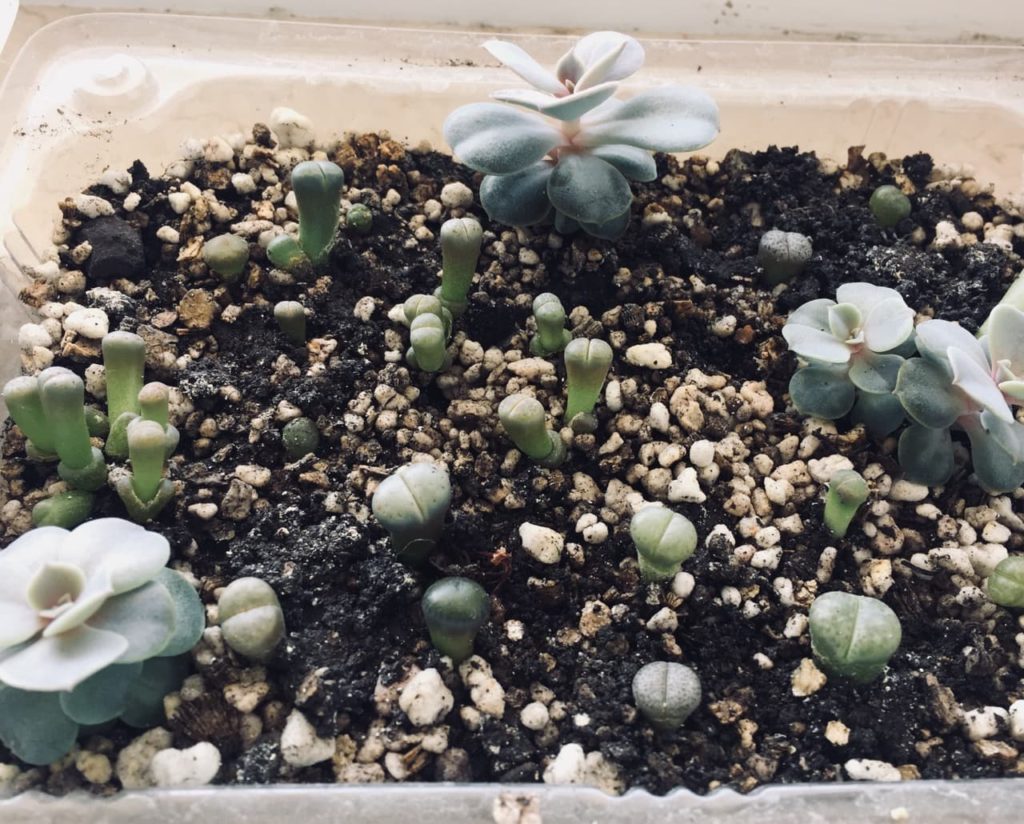Living Stones Plants Can Be Grown From Seed: Focus On Light And Warmth

SUCCULENTS > LITHOPS > SOWING
Reviewed By COLIN SKELLY

Colin is a Horticulturist and Horticultural Consultant with experience in a range of practical and managerial roles across heritage, commercial and public horticulture. He holds the Royal Horticultural Society’s Master of Horticulture award and has a particular interest in horticultural ecology and naturalistic planting for habitat and climate resilience.
IN THIS GUIDE
LITHOPS GUIDES
Sowing
If you like succulents but don’t care for thorns, then Lithops is for you.
This plant looks like a pair of little oval stones set close together; the colour is usually grey, brown or green, with some texturing or a single daub.
It is no surprise then, that these plants are known as ‘Living Stones’.
These plants have tiny seeds that are very much like coarse sand, so you will be sowing sand-like seeds in a sandy medium to grow small stones.
You can enjoy the procedure of growing Lithops from seed by following these steps:
- Arrange the preliminaries for sowing, with a particular focus on getting the right temperature.
- Prepare the pots with well-draining, coarse soil.
- Sow the tiny Lithop seeds carefully, making sure they have enough light exposure to germinate properly.
- Wait for germination to occur – ensuring consistently moist conditions.
- Water the seedlings frequently before potting on the following summer.
Each stage of this process is explained in more depth below.
| Difficulty | Medium |
| Equipment Required | Gardening gloves, seeds, pots, growing medium |
| When To Sow | April |
1) Find A Suitable Spot For Sowing
Just as some seeds need light to germinate and some need dark, Lithops seeds are fussy about the temperature they need to germinate, as well as the season.
Most varieties of Lithops seeds need a temperature between 19-24°C to germinate and are best sown during April.

Find a spot by a window where they will get ample indirect bright light for several hours, but no direct sunlight.
Otherwise, set up grow lights or any artificial light of the appropriate intensity.
2) Prepare The Pots & Growing Medium
It is difficult to sow Lithops seeds in a controlled manner as you usually would and that’s because they are so tiny.
Therefore, it is the best option to sow them in pots.
Use small 9cm pots with drainage holes at the base.
Succulents are best started and rooted in very well-draining coarse soil that is not organically rich, and Lithops is no exception.
3) Sow The Seeds
First, dampen the compost.
To sow tiny seeds in a controlled manner, I take a stiff piece of cardboard and sprinkle seeds on it.
Holding the cardboard stiffly in one hand and with a table knife in the other, carefully separate and push off seeds, scattering and spacing them over each pot.
Lightly dab down so that the seeds are just lodged into the medium.

Do not try to push the seeds in – they need light to germinate.
Take as many clear polythene sheets of the appropriate size as you have pots.
Make only two or three punctures in each sheet, and cover each pot to lock in humidity.
Fasten the sheets around the edges of the pots; you could use rubber bands or clips.
4) Wait For Your Living Stones To Germinate
Every morning remove the polythene sheet, spray the medium to moisten it well and replace the sheet.
The medium should be kept continuously moist.

Repeat this step until you see the seedlings sprout up.
This may take anything from 4-20 days, depending on the species and conditions.
5) Water The Emerging Seedlings
When you see seedlings in a pot, remove the polythene sheet.
Continue keeping the medium moist as before for two to three months.
Thereafter, reduce the frequency and volume of watering by dropping it down to every other day.

As the plants grow, continue to reduce the frequency of watering while keeping the medium moist.
“Lithops seeds respond to seasonal moisture to germinate but then enter a dry season, so try to avoid overwatering seedlings as this will cause them to rot,” shares Colin Skelly, a Horticultural Consultant.
The following summer the new, maturing living stones may be potted on.
When potting on, you may use a somewhat more nutrient-rich compost and then start to feed the plants.

